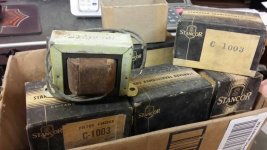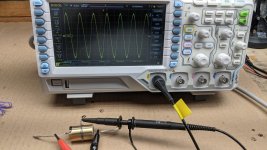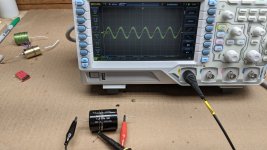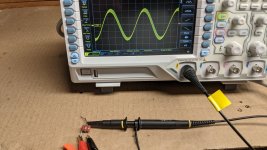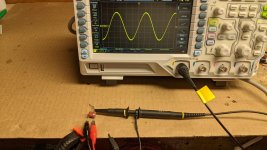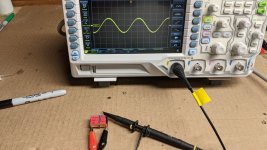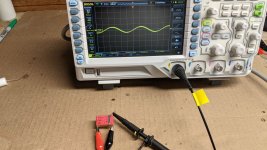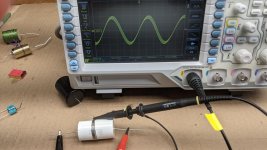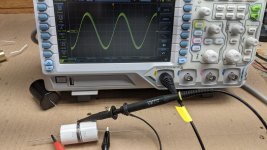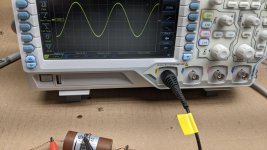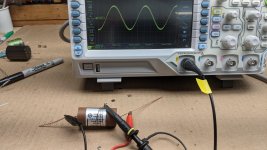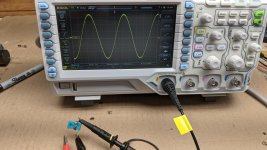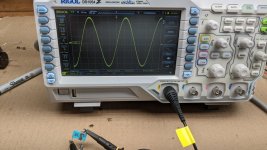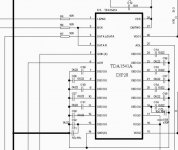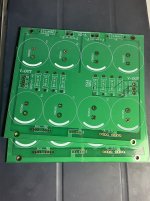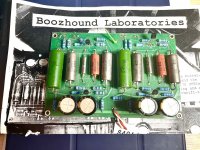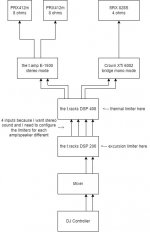I thought I would post the results of my attempts to achieve better sound from the
Paradigm Reference Studio 100 v.2 multi-way floor-standers (1 tweeter, 1 4" mid, 2 8" woofers -- 110lbs) that I bought a few months ago. They are located in my living room, which is 20'L x 12'W x 8'H and has suspended hardwood floors. I listen across the width of the room, so the range is pretty close.
In this particular room, the speakers have a very prominent bass output that, at higher volumes, can overwhelm the mids and highs, and also transfer mechanical vibrations into the structure of the house, producing very undesirable sound artifacts and killing the sound stage and imaging. This was especially true when I first got the speakers home and used the round brass feet that were screwed tightly to the bottom of the cabinets and placed directly on the floor. Loosening the feet a little did not really help.
My next step was to remove the brass feet and place small aluminum receiving cups under the spikes, which resulted in a *drastic* improvement in clarity, instrument separation, and imaging. I was really taken aback at how much improvement came from that simple change. I then decided to take it further by affixing self-adhesive plastic Magic Sliders under the cups, which improved the sound even more.
Still, at louder (but not ear-shattering) volumes, there was a tendency for the bass output to overwhelm the mids and highs coming from the speaker itself, as well as for mechanical vibrations to turn my living room into a giant subwoofer. So I decided some dampening material might help to minimize energy transfer and also clean up/balance the sound coming from the drivers. I figured the vulcanized rubber that hockey pucks are made of might do the trick, while the reduced friction of furniture sliders attached to the bottom would allow lateral vibration to occur and minimize transfer of mechanical energy into the hardwood floor. It $1 a puck, it could also be done at much lower cost than the beryllium/titanium/plutonium/unobtanium products marketed to audiophiles at great expense.
You would NOT BELIEVE how difficult it is to find hockey pucks in Oklahoma.
At first, I simply cut some furniture sliding felt to fit the pucks, removed the spikes from under the speakers, and placed the speakers on top of the pucks. Bass dominance of the sound output and mechanical transfer were drastically reduced, but clarity, instrument separation, and soundstage suffered woefully.
 puck-felt
puck-felt by
jeffdrouin, on Flickr
 pucks-speaker
pucks-speaker by
jeffdrouin, on Flickr
I then hypothesized that more lateral movement was necessary for allowing mechanical energy to dissipate out of the speaker enclosures, which could be achieved by reintroducing the spikes and placing the receiving cups inside the pucks.
So I bought a 1" forstner drill bit, found the center of each puck by inscribing a rectangle and drawing diagonals across its corners, and then drilled down 1/4" (the thickness of the cups). I inserted the cups, reinserted the spikes, and put them in place on the assembly.
 puck-cutting
puck-cutting by
jeffdrouin, on Flickr
 puck-cup-assembly
puck-cup-assembly by
jeffdrouin, on Flickr
 puck-cups-spikes
puck-cups-spikes by
jeffdrouin, on Flickr
 room-setup
room-setup by
jeffdrouin, on Flickr
(also visible in these pictures are my DIY speaker cables and interconnects)
The result is a *MUCH* more balanced and accurate bass response, with clarity restored to the midrange and highs, soundstage as good as I'd had it before, and almost no reverberation from the structure of the house.
Still, I can't help thinking that there might be too much volume taken out of the upper bass and highs. I'll do an A/B comparison with cups/furniture sliders alone, just to see if this is a placebo effect.
Now I'm thinking an even better solution might be to use less absorptive material in the feet and place them on a dense surface between the feet and the floor. Might try going back to cups/sliders -- but on top of granite slabs with a layer of cut doormat or something between them and the floor.
Frankly, the speakers are probably just too large for the room and engineering of the house, so I've been considering a switch to DIY full-range folded horns and a tube amp. But these changes have greatly increased the enjoyment of the music and system that I have. Any new steps will have to wait until we decide whether we're moving or renovating, either one of which will happen within the year.
Also, if anyone has further advice on room placement, dampening, or isolation, I'd really appreciate it!
Thanks, and I hope this documentation is helpful to anyone with large multi-ways looking to get better sound in their small rooms.
